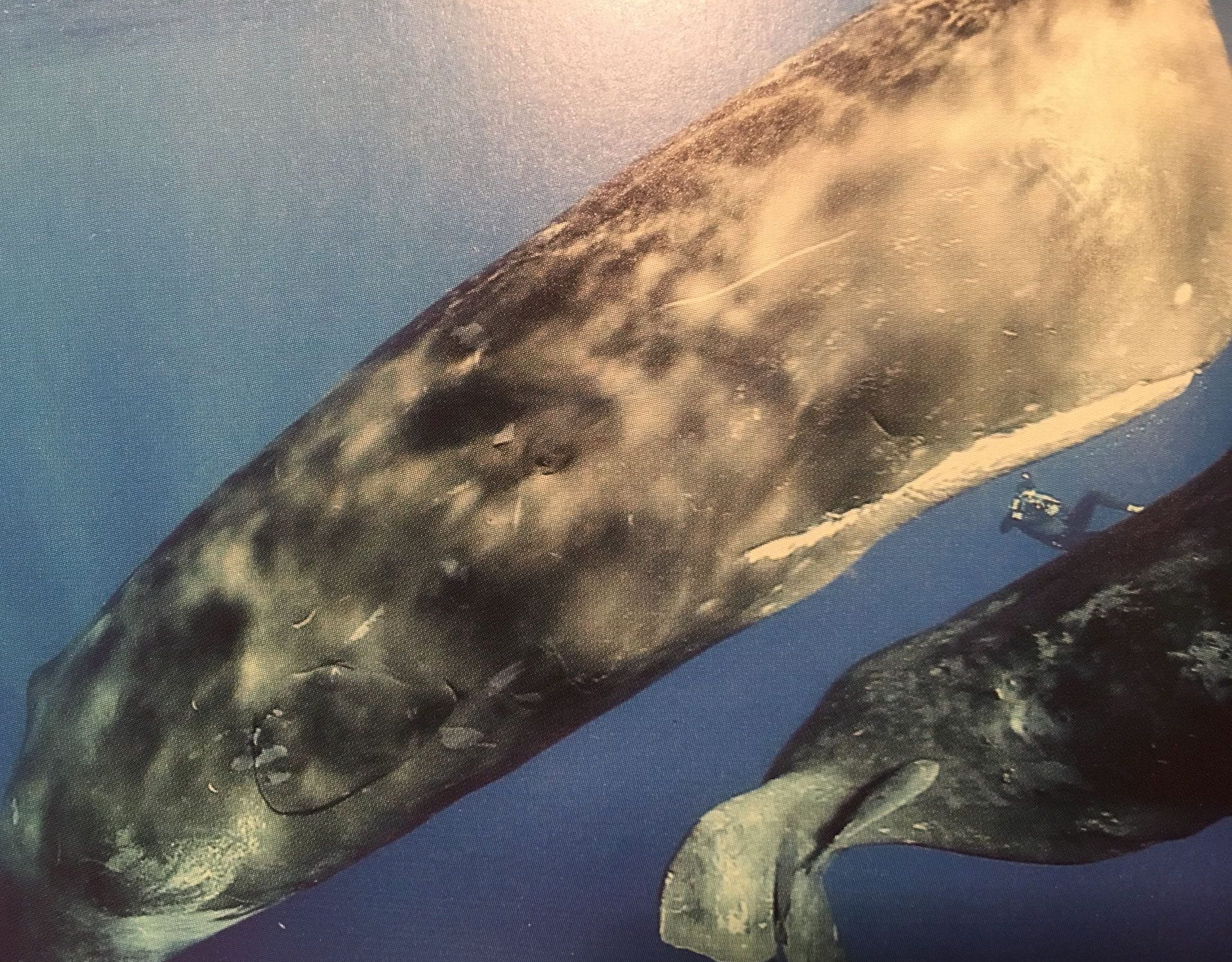Sometimes truth is better than fiction.
In Chapter 41 of Moby-Dick titled “Moby Dick,” the title character is described to be representative of a type of whale “not only to be a consternation to every other creature in the sea, but also to be so incredibly ferocious as continually to be athirst for human blood” and that “at sight of the Sperm Whale, all fish (sharks included) are ‘struck with the most lively terror,’ and “often in the precipitancy of their flight dash themselves against the rocks with such violence as to cause instantaneous death.'” Melville took these descriptions from travel writers and natural historians. Of Moby Dick himself, Melville’s Ishmael says, the reason for fear was the “unexampled, intelligent malignity which, according to specific accounts, he had over and over again evinced in his assaults. More than all, his treacherous retreats struck more of dismay than perhaps aught else. For, when swimming before his exulting pursuers, with every apparent symptom of alarm, he had several times been known to turn round suddenly, and, bearing down upon them, either stave their boats to splinters, or drive them back in consternation to their ship” (147).
Contrast this with the experience of Fabrice Schnoller, a ship’s captain, featured in James Nestor’s 2014 nonfiction book Deep: Freediving, Renegade Science, and What the Ocean Tells Us About Ourselves. Schnoller recounts a singular experience he had when captaining a 60-foot sloop called the Annabelle. Schnoller realized the ship was surrounded by a pod of whales. He jumped into the water with a waterproof camera, mask, fins, and snorkel, and found himself surrounded by whales, who approached him, making clicking noises. Nestor writes, “They gathered around Schnoller and rubbed against him, face to face. Schnoller could feel the clicks penetrating his flesh and vibrating through his bones, his chest cavity.” Schnoller spent two hours swimming with the creatures.
When Captain Schnoller compared photographs he took that day (including the one featured here where you can spy him swimming between the two whales) to photos of whales found online, he discovered he’d been swimming with sperm whales. They were not the ferocious creatures he’d read about but rather were “gentle, curious, and intelligent” and had “approached in peace and welcomed him into their pod.”
Schnoller believes the whales treated him as they did because they recognized a fellow mammal with the potential for intelligence. Let’s hope he’s right.

